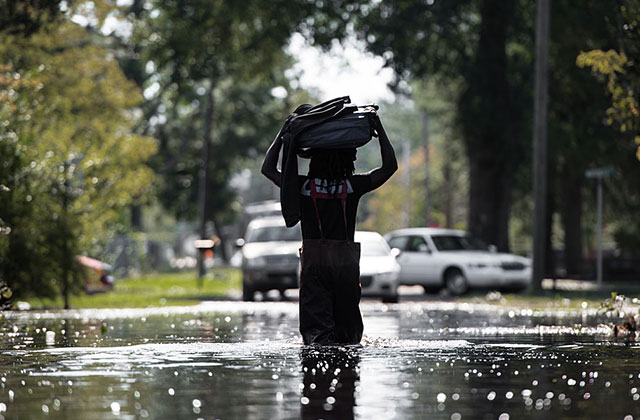Trump Administration Downplays Damning Climate Change Report

On Friday (November 23), as many were still enjoying time off for the Thanksgiving holiday, the White House released the findings of a scientific study on climate change—and its assessments directly contradict the policies put forth by the Trump administration.
The 1,656-page National Climate Assessment, reports The New York Times, is “the most comprehensive scientific study to date detailing the effects of global warming on the United States economy, public health, coastlines and infrastructure. It describes in precise detail how the warming planet will wreak hundreds of billions of dollars of damage in coming decades.”
Every four years the government is required by Congress to release a climate assessment; so the White House had no choice but to produce this report. But this administration, which denies the validity of climate change, timed its release to minimize impact, according to reports. Steven J. Milloy, who was a member of Trump’s Environmental Protection Agency transition team, told The New York Times that if the assessment had to be released, it made sense to “do it on a day when nobody cares, and hope it gets swept away by the next day’s news.” Milloy also called the scientific findings “made up hysteria.”
The assessment is the result of work by about 300 scientists, including career government scientists from 13 federal agencies. The project began in 2014 under former President Barack Obama, but was completed after Donald Trump’s term began.
No area of the United States will escape the effects of global warming, according to the report—either because of flooding, droughts or extreme heat. And communities of color are especially vulnerable to the predicted changes. Writes National Geographic:
In addition, climate change's blows probably will worsen social and economic inequality across the country. Already, the poor, very young or very old, and communities of color disproportionately face the dangers of our climate-weirded present—and will bear an even greater burden in the decades to come.
In particular, coastal flooding is projected to increase dramatically in the Southeast. For example, National Geographic reports that Charleston, South Carolina, which is 34 percent African-American, “could experience 180 tidal floods in a year by 2045, compared to 11 per year in 2014.”
Throughout the United States, coastal communities are disproportionately occupied by people of color.
Flooding is also predicted in other regions. The New York Times reports that Alaska will experience “loss of sea ice [that] will cause coastal flooding and erosion and force communities to relocate.” As sea ice melts, 31 Alaskan communities are already threatened with coastline erosion and flooding. Scientists from 13 federal agencies concluded in a 2017 climate change report that temperatures in Alaska are rising twice as quickly as the global average.
In addition, The Times notes that Puerto Rico and the Virgin Islands will have its drinking water tainted by saltwater. These islands are also vulnerable to an increased frequency of destructive hurricanes. As Colorlines has previously reported, according to scientists and meteorologists, there are two major ways that climate change intensifies hurricanes: One, it causes the wind currents that hurricanes ride to slow down, meaning storms linger and can dump rain onto an area for more time; and two, it increases ocean temperatures. Warmer oceans act as fuel to power a hurricane’s speed.
Native American communities are also vulnerable. "Climate change increasingly threatens Indigenous communities’ livelihoods, economies, health and cultural identities by disrupting interconnected social, physical and ecological systems," reads the report.
While the assessment was not censored by the Trump administration, there is little indication that the White House intends to change its environmental policies. Per The Times:
A White House statement said the report, started under the Obama administration, was “largely based on the most extreme scenario” of global warming and that the next assessment would provide an opportunity for greater balance.
[…]
[Trump] has directed the Environmental Protection Agency to sharply weaken the nation’s two major policies for curbing planet-warming pollution: One rule that would restrict greenhouse emissions from vehicle tailpipes, and another that would limit them from power plant smokestacks.
But that won't stop the fight. “This report will weaken the Trump administration’s legal case for undoing climate change regulations, and it strengthens the hands of those who go to court to fight them,” Michael Oppenheimer, a professor of geosciences and international affairs at Princeton, told The Times.
